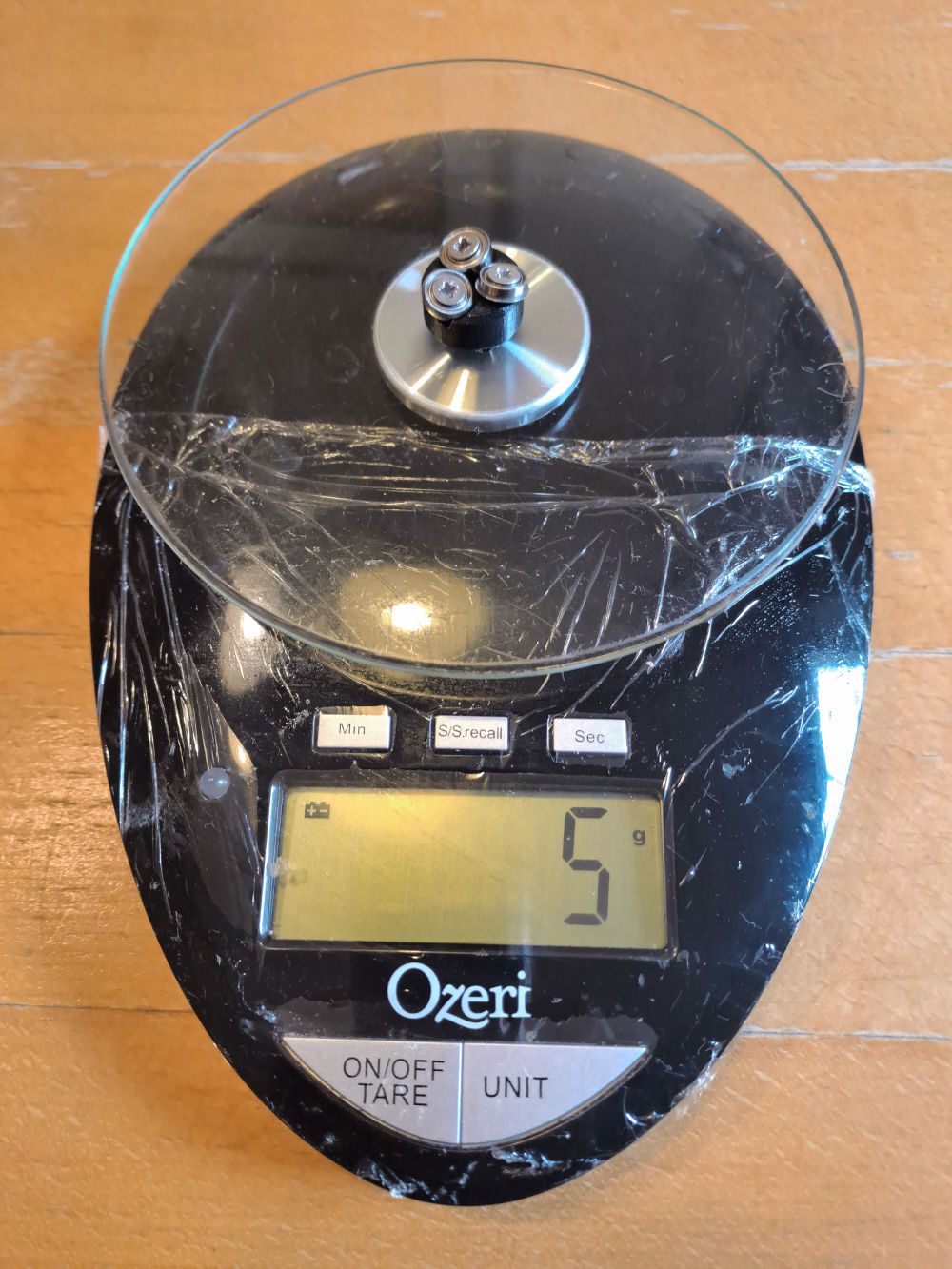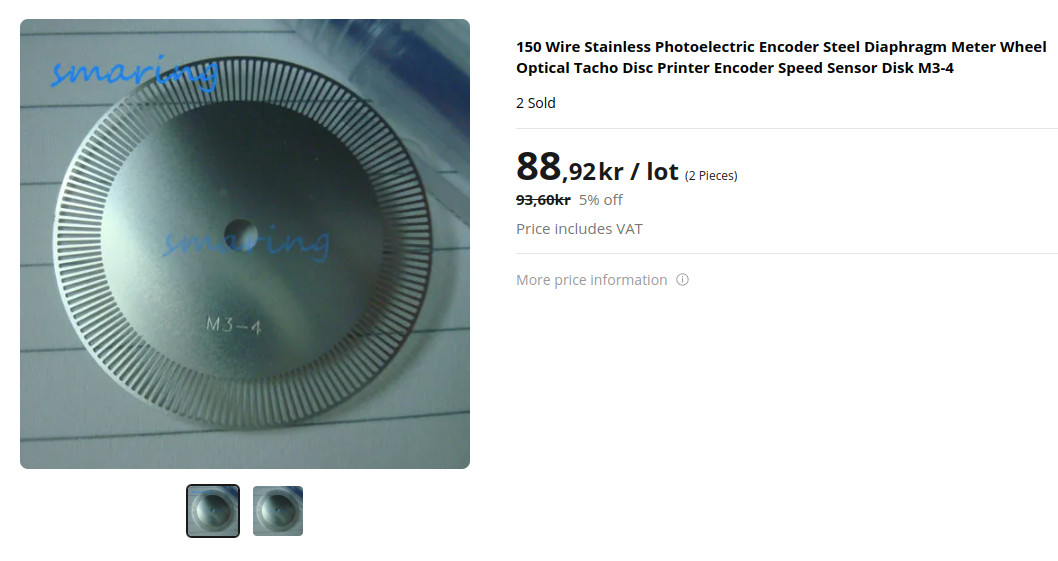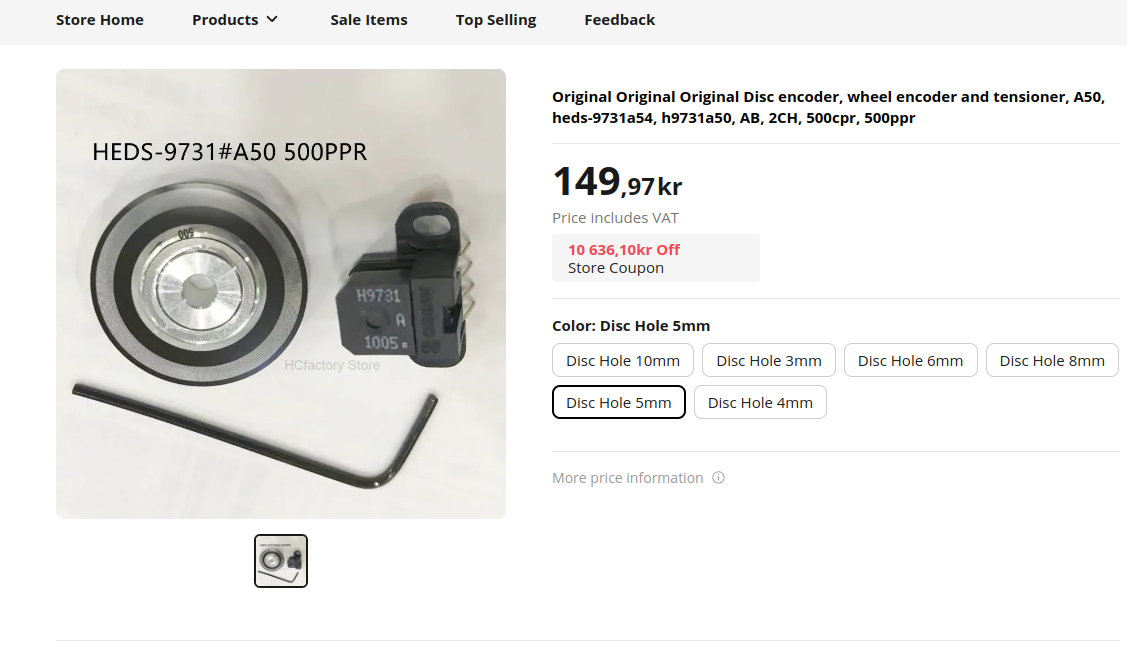Hollow shaft extruder
-
@o_lampe said in Hollow shaft extruder:
I compared the VDE100 and the screw-roller extruder. The cant angle of the screw roller seems bigger, but the pitch is only 0.8mm vs 1.5mm of the VDE100. How does that work?
Does "pitch" mean the pitch of the thread that is cut into the filament?
The threads on a screw roller are already canted. If you tilt the roller in the right direction you can bring the threads level, which would result in no feed on the filament. If you carry on tilting, you'll start getting feed in the opposite direction. The magnitude of the total effect will be the difference between the magnitudes of the two individual effects. Perhaps this is what is happening.
Another alternative is just that there might be a lot of slip or thread compression with that particular design.
Or it may just be that there is a confusion around the word "pitch" - it could be referring the the pitch of the threads on the roller being 0.8mm.
What actual screw roller example were you looking at?
-
-
@o_lampe Where did the 0.8mm pitch number come from? I don't see it in the Skewder_Servo_Extruder project.
-
@tombrazier There are some weird numbers which don't make sense.
The forked version of the Skewder uses a different roller (8.2x0.8), while the original uses 8mm OD bearings, but a M8x0.75 screw?
Even worse, the images aren't correct, too. (says 6mm bearings, but 8mm it is)Anyway, I made the 8.2mm version and it works even with resin-printed rollers.
The pinch-lever does a good job, in release position I can pull out the filament.
But I haven't yet found out how to lock it. I squeezed a 2mm piece of scrap in, but will it hold?
I have ordered two types of motors from aliexpress (2804/100kV and 2805/160kV)
When they arrive, I'll test further. -
BTW: the extruder weights only 24grams w/o motor and encoder
The lightest extruder I had so far weights 47grams w/o motor (sherpa mini) -
@o_lampe Does the pinch lever go all the way or does it just get tightened until it is pressing against the filament? I'd worry about it giving different extrusion rates if there is any uncertainty about its position.
BTW: the extruder weights only 24grams w/o motor and encoder
The lightest extruder I had so far weights 47grams w/o motor (sherpa mini)
-
@o_lampe It's not clear to me that the encoder is needed. Unless SimpleFOC requires it?
-
@tombrazier said in Hollow shaft extruder:
The 34g one has an outer diameter of 33mm. I think this might actually be small enough to mount on a Voron tool head.
Ah, bother, it isn't. There's only about 12.5mm distance between the axis of the filament and the part cooling fan. A motor would have to be 25mm or less in diameter to fit inside a Voron Stealthburner.
-
@tombrazier said in Hollow shaft extruder:
@o_lampe It's not clear to me that the encoder is needed. Unless SimpleFOC requires it?
I asked myself the same. There are different example projects, I'm sure it's required for absolute positioning.
Would be cool if we could combine it withthe magnetic filament sensor for real closed loop control. -
@o_lampe there are different types of encoders. I am sure there are models where a hole can be bored in the middle for the filament. Those with hall sensor like your example will probably not work, but those models with gray code at the edge (grayscale on circle) and optical sensor to read the information may work.
eg this here: https://www.digikey.de/de/products/detail/broadcom-limited/AEAT-84AD-LBSC0/2210459 a bit expensive though
The AMT series https://www.cuidevices.com/product/resource/amt21.pdf is another one, which is in the 50$ range and has high resolution (relative and absolute models). Probably all encoders which are assembled on the shaft are possible.
-
@o_lampe Accuracy is not too good without having a encoder.
12 coils and 14 magnets would get you to ~8.5°. The more coils/magnets you have the more "steps" you will have. This is why a encoder is "required" for anything with high accuracy.If you get a encoder with above 200 pulses per rotation it would be the same as a 1.8° stepper. With a AMT103 optical encoder (holethru) for $20 you can have up to 8192 pulses per rotation, but that is definitely overkill for this usecase, and may be problematic for the MCU. Aim for something like 200-500 pulses per rotation.
If you are really wanting to cut down on weight you could probably go with something like:
https://www.aliexpress.com/item/1005004559035047.html
but that would require you to build a chamber that it would sit in, and tolerances so the disk never touches the sensor is also quite critical, and when you start printing you will get quite a bit of vibration. Have not proofread if this specific one is compatible with the ArduinoFOC lib.Edit: Should have been a reply to @tombrazier
-
@pakar
The magnetic filament monitor sold by Duet3D sends angle data via i2c. One turn equals 1024 pulses. They aren't send continuosly but every 40ms.
Although I think the mag. sensor is the same as on the MKS SF2804 motor/encoder combo, I wonder if simpleFOC would be happy with this data protocol?It would be cool to use Duets filament sensor for both usecases. Filament_runout switch for Duet-trigger and i2c-pulses/rev for simpleFOC.
I'm pretty sure, we can't use the i2c data channel with both receivers? Maybe in a daisy chain manner?
(I'm fishing for an official statement here)//edit
In general it's possible to use multimaster mode and have more than one receiver communicate with the same slave.
If we had a RRF toolboard for BLDC, the problem wouldn't occur, if the filament sensor would be connected to the same MCU as the BLDC-extruder. -
@o_lampe I2C is polled by the MCU, so it's up to the MCU to decide when to read. If using interrupts from a encoder the cpu would be forced to handle every pulse when it pulses. This is why i previously stated that a high interrupt count may be problematic for the MCU.
The I2C standard do support multiple masters on the same bus, but that depends on all masters listening for the clock and not trying transfers when another master is communicating. They would also need to handle collisions on the I2C bus.
If the Duet FW has strict timing of when it needs data that might also be an issue. Second issue would be to figure out how fast the FOC algo needs to get feedback after moving the motor, and 40ms is only 25 updates per second. If reading the filament sensor there would also be quite a large lag between moving the motor and the filament moving but not sure if that's a huge problem at the speeds needed here. (25 updates per second at 1rpm = 14 degrees)If we get to a point of a working PoC i might do a spin of the simplefoc-mini and embed a tiny MCU that can do CAN-bus and/or i2c to keep all the motor-control/monitoring in the same place.
I'm running my smarteffector together with a Manta M8P on a DIY delta so have a bit more freedom myself.
My main knowledge related to this subject is in electronics and embedded development.
I'm not affiliated with Duet3D so cannot make any official statement, just interested in the extruder.
-
@pakar I agree, the lag could be a problem if the sFOC needs the encoder pulses to mimic a stepper motor. (*)
An STM32 or SAMMY-C21 toolboard sure has some headroom for reading encoder pulses faster. It just wasn't necessary for filament slip detection, I guess.*) sFOC can work in open loop (eg. velocity control), but I haven't figure out how the motor would be started. (reading backEMF would require a spinning motor and doesn't work well in low-rev scenarios.
-
@pakar said in Hollow shaft extruder:
If you are really wanting to cut down on weight you could probably go with something like:
https://www.aliexpress.com/item/1005004559035047.htmlThe page doesn't show anything. The article is not available...
Do you have a product name, I can google? -
This post is deleted! -
Just a free-standing optical disk and reader.
Search for "optical encoder disc" to get some more details.This was just the first one on ali i found.
-
I just registered on simpleFOCs own forum and asked some questions.
There is a guy, who has build his own screw-extruder, his own (tiny!!) hotend and designed an STM32 based simpleFOC driverboard with encoder. Awesome guy!
Check out his video
He, amongst others, voted against building a toolboard with BLDC driver, but instead provide basic step/dir interface and use simpleFOC on a standalone board. -
@o_lampe
That was exactly what i was thinking of, but with a external counter.
Give me a shout if you are thinking about ordering some of those boards. Can do all the soldering/flashing if needed. Don't have a resin-printer myself to print the extruder so maybe we can do a colab.Would probably be possible to use something existing like this instead of printing that disc. (steps and size would of course need to be matched with the extruder/motor/pcb)

-
@pakar
I'm not through with reading all the interesting stuff over there and they seem to be very active.
The sFOC-mini I've ordered is not the best solution (but it's the official PCB).
I'm sure we find a way to colab. I live in Germany, BTW.The slotted disk wouldn't work with his reflective sensor. I thought of making my own disk from black anodized and laser engraved aluminum. Or spray-paint/engrave a lighter plastic disk. My CO2 laser could then do both, cutting the shape and engrave.

